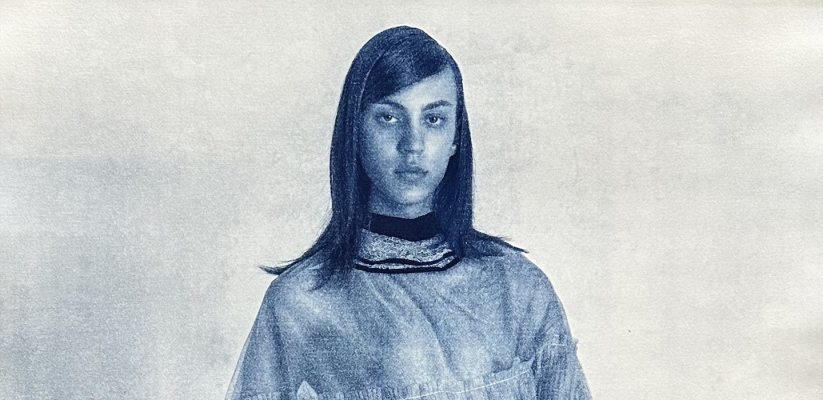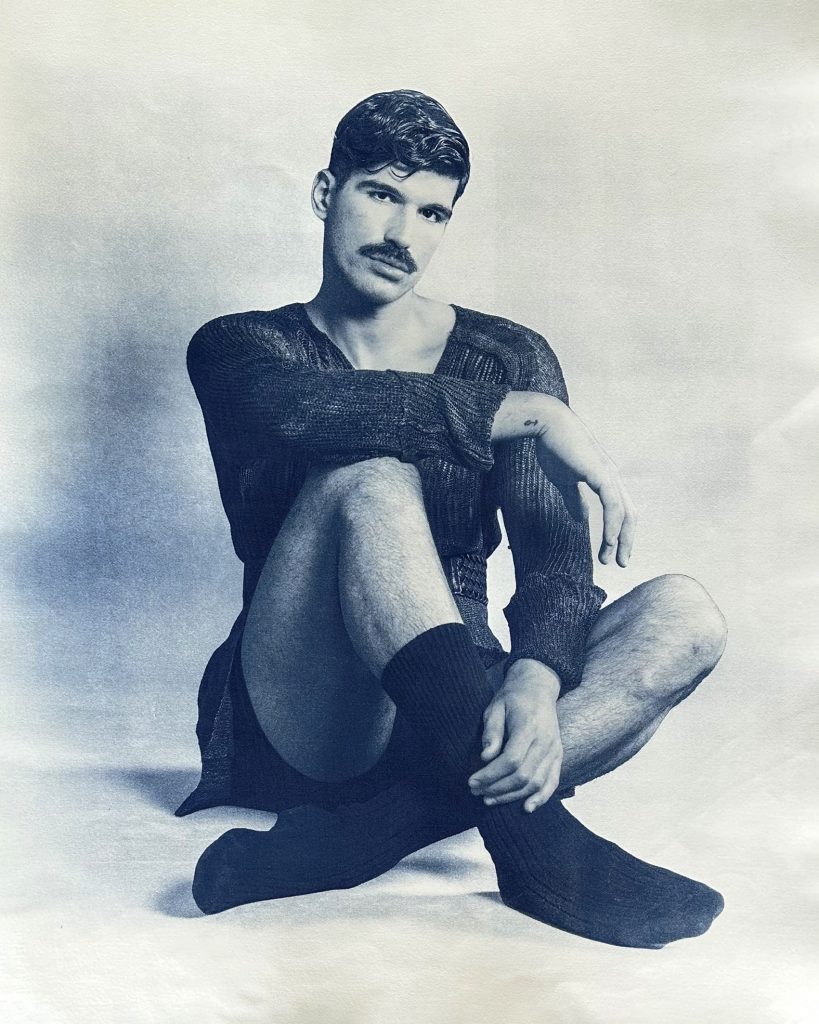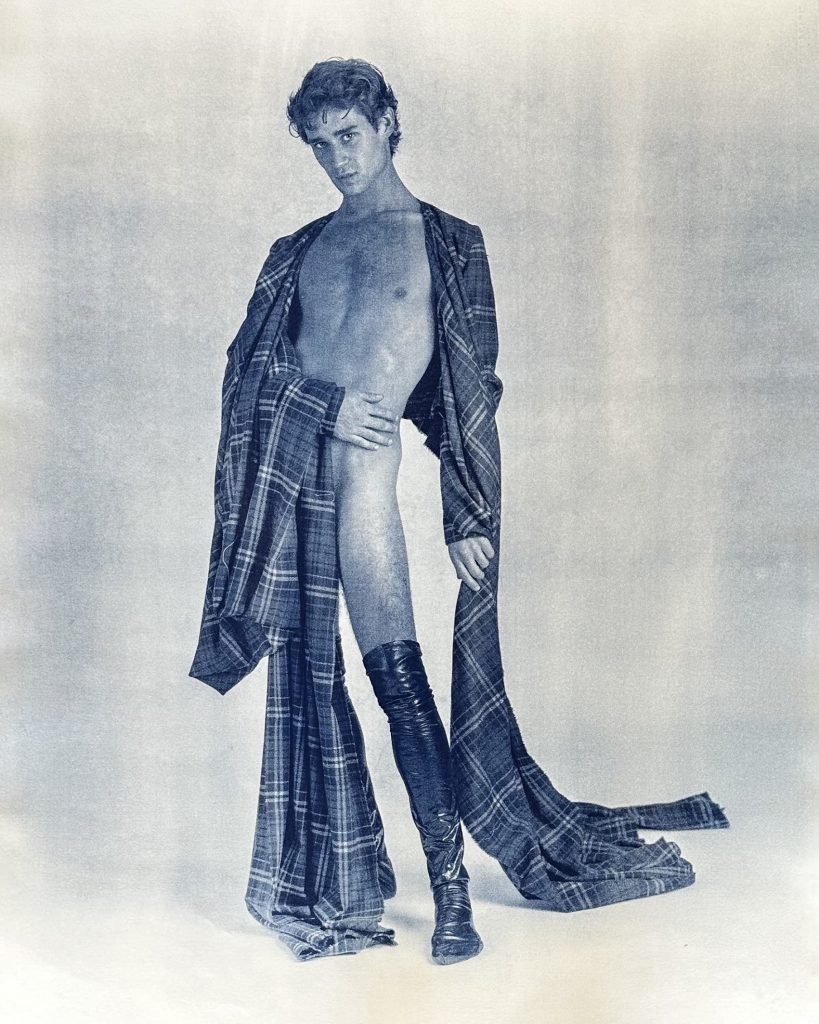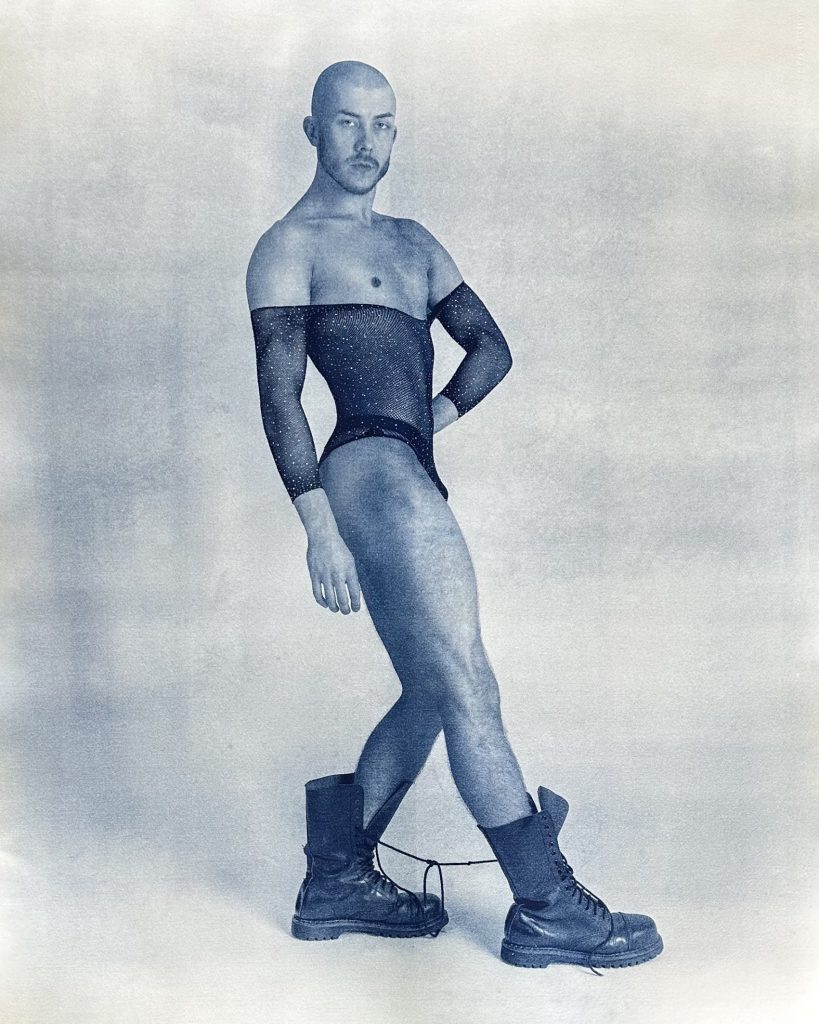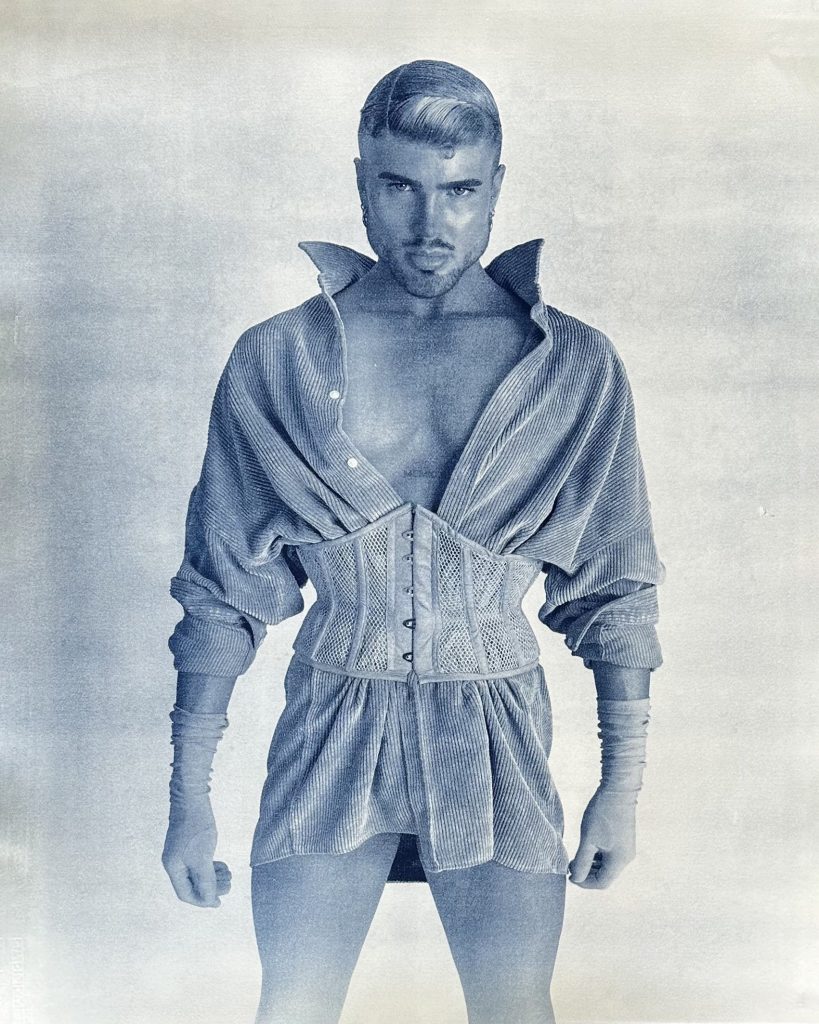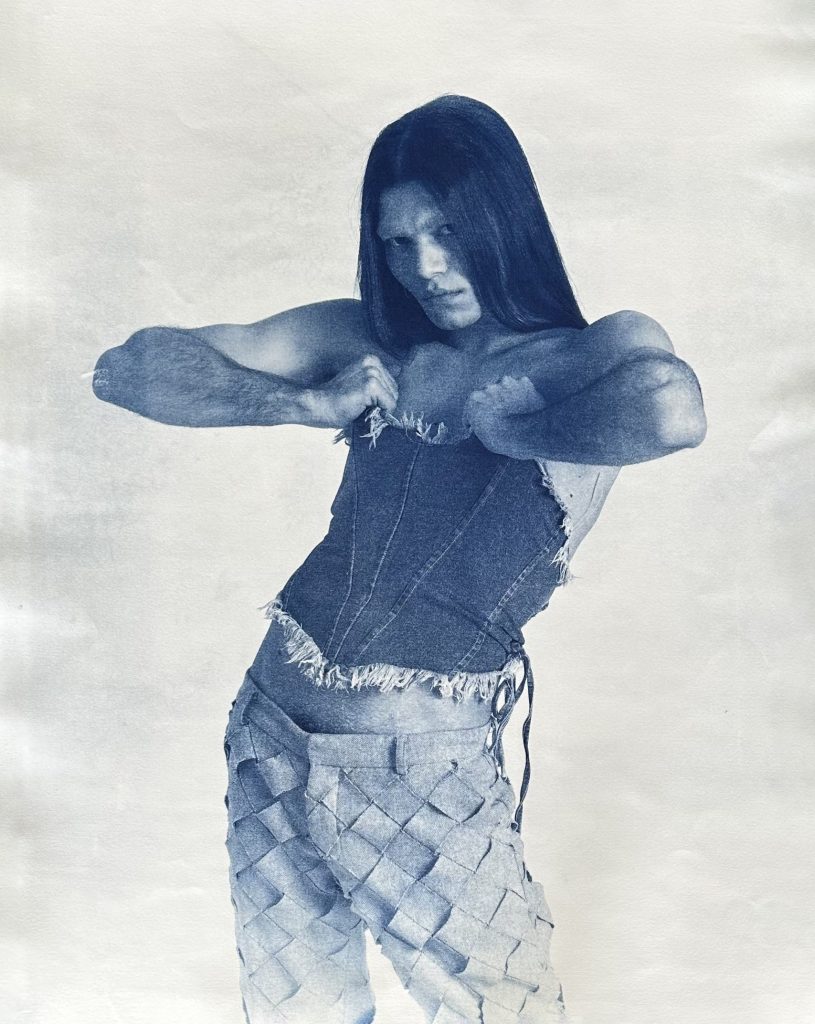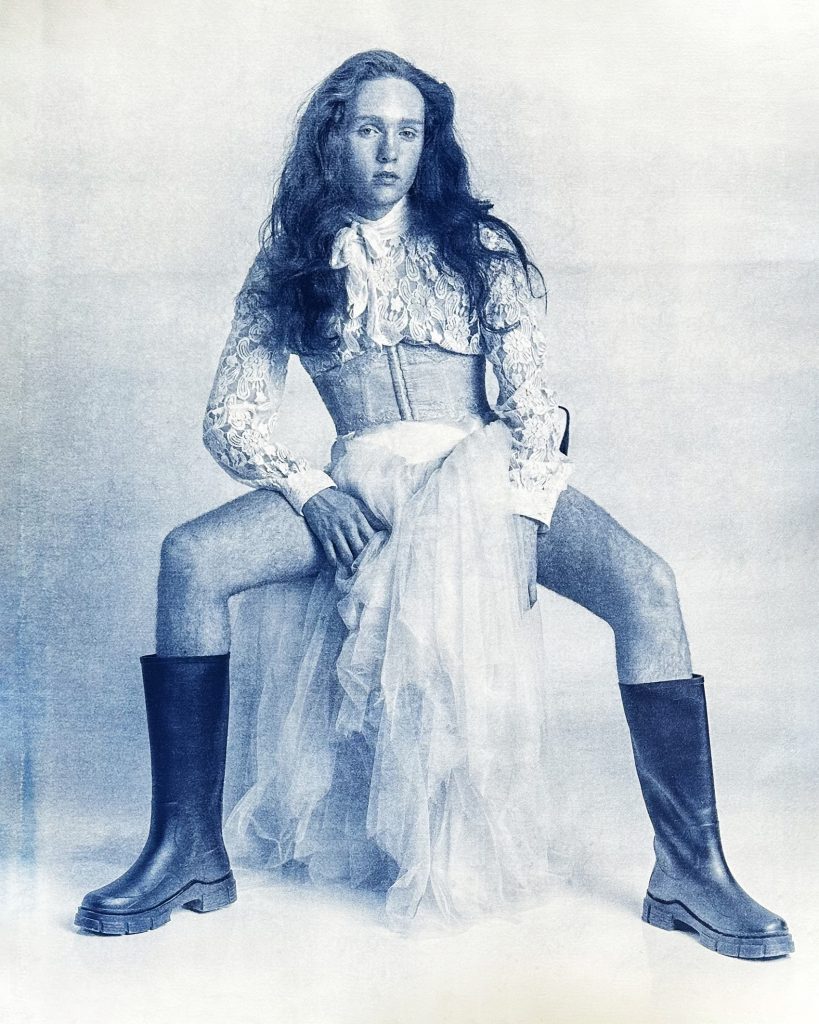Please Note – The following blog contains work that covers themes of nudity, reader discretion is advised.
Westminster’s annual degree shows are a celebration and showcase of our creative students’ talents and hard work. The student work is a culmination of the skills and creative practices developed during their studies. The degree shows are highly anticipated amongst students, staff and industry guests every year.
Our Photography BA has an excellent international reputation for its academic and practical teaching. The course allows students to develop their creative production skills across a range of photographic and lens-based media, to establish a critically engaged self-reflective creative practice. The success of the course is evident in the distinguished record of graduate employment in the industries it serves and in the publication, production and teaching profile of its staff and graduates.
This year we spoke with Alexandros Charovas, a third-year Photography BA student. Ahead of the exhibition, he told us about his project on gender identity, preparations for the show and aspirations for the future.
- What are you most excited about for the degree shows?
I am most excited about the opportunity to showcase my artwork and share my creative vision with a large and diverse audience. It is a climax of years of hard work, dedication, and artistic exploration, and I am thrilled to see my efforts come to maturity. The degree shows provide a platform for me to present my ideas and engage with fellow artists, peers, academics and the general public, allowing for valuable feedback and discussions. I am particularly looking forward to the vibrant atmosphere of the event, the exchange of ideas and the chance to connect with individuals who share a passion for art and photography. Overall, the degree shows represent a significant milestone in my artistic journey and I am eager to see how my work resonates with others and sparks meaningful conversations.
2. Tell us more about the activities you are involved in to help organise and prepare for your degree show
I have been actively involved in various activities to ensure the successful organisation and presentation of our degree show. Working closely with my course leader and fellow students, we have taken on several responsibilities to cover different aspects of the show.
We have contributed to the development of the visual identity for the degree show, including the design of logos, colour schemes, and overall branding. This involved brainstorming sessions and collaboration with graphic designers. We used the visual identity to help design promotional materials for the event such as the exhibition catalogue and invitations. Additionally, we have all been involved in promoting the event on social media platforms, engaging with potential visitors and sharing information about the show and the participating artists.
I have also participated in the budget and project management of the event, coordinating with the venue, Truman Brewers in Shoreditch, to ensure our artworks are installed and displayed correctly. We measured the exhibition space, created floor plans, and discussed technical requirements with the venue staff. We also arranged the transportation of all the student artwork to the venue.
As a group, we have had curatorial discussions and made decisions regarding the arrangement and display of artworks within the exhibition space. This involves considering the overall aesthetic and thematic connections between different works, and creating an engaging visual experience for visitors.
3. How has your course prepared you for your final project?
Throughout my Photography BA course at Westminster, I have been equipped with a diverse range of skills, knowledge, and critical thinking abilities that have significantly prepared me for my final project. The course curriculum provided a comprehensive understanding of various photographic techniques, conceptual frameworks, and historical contexts. From the very beginning, I engaged in hands-on learning experiences, such as practical workshops and studio sessions, which allowed me to experiment with different photographic processes and develop technical proficiency. These practical skills, combined with theoretical discussions and critiques, helped me refine my artistic vision and conceptual thinking. The course also offered modules focused on contemporary art practices, visual storytelling, and the exploration of themes and narratives in photography. These modules provided me with a deeper understanding of the creative process, the importance of research and experimentation, and the ability to communicate ideas effectively through visual language.
Additionally, the guidance and mentorship from experienced academics in our department played a crucial role in shaping my project. They provided constructive feedback, challenged my ideas, and encouraged me to push the boundaries of my creative practice. Through regular tutorials and group discussions, I received valuable input that helped me refine my concept, strengthen my technical skills, and develop a coherent body of work.
4. Tell us more about your final project
My project Liberated Masculinity challenges traditional representations of masculinity through a series of gender-fluid portraits. In a society where gender roles and norms are evolving rapidly, this project aims to celebrate individual expression and diversity, while creating critical discussions about the performance of culture and gender. Liberated Masculinity takes a critical approach to photography, examining how photography has shaped the cultural performance of masculinity and the various narratives that have been associated with it. Through a fusion of early photographic techniques and contemporary digital photography, the project creates a dialogue between old tropes and new norms. It seeks to encourage critical discussions about gender and challenge problematic expressions that have perpetuated toxic masculinity and prevented men from fully expressing their emotions, desires, and sexual preferences. Ultimately, Liberated Masculinity aims to create a space for multi-layered humanity and encourage openness, acceptance, and consideration for one’s physical and emotional satisfaction.
Through a series of large-scale cyanotypes, I aim to visually capture the complexities and nuances of gender expression, challenging conventional norms and inviting viewers to question their preconceived notions. The cyanotype process itself plays a significant role in my work, as the deep blue tones and the handcrafted nature of the prints create a sense of intimacy and vulnerability. Each image is carefully composed, incorporating symbolic elements, gestures and subtle visual cues to convey narratives and evoke emotional responses.
5. What has inspired your creative thinking and work so far towards your final project?
For my final project, my creative thinking and work have been inspired by a combination of personal experiences, academic studies, and theoretical readings on gender identity and performativity.
Drawing from my personal experiences and reflections, I have delved into themes of self-discovery, identity construction, and the negotiation of societal expectations. This introspective approach has allowed me to infuse my artwork with a sense of authenticity and personal resonance. In addition to my personal experiences, my academic studies have played a crucial role in shaping my creative thinking.
I have immersed myself in theories related to performances of masculinity and the broader spectrum of gender identity. Through readings by theorists such as Judith Butler, Roland Barthes, and Michel Foucault, I have gained insights into the complex interplay between societal norms, power dynamics, and individual agency in relation to gender performance. Exploring these theories has challenged my understanding of gender as a performative construct and has encouraged me to critically examine how gender identities are shaped, maintained, and subverted within social contexts. This critical lens has informed my artistic choices, allowing me to navigate and deconstruct notions of gender performativity through visual storytelling.
6. What do you hope to achieve from your final project?
I aim to spark critical discussions and provoke thoughtful conversations surrounding themes of gender identity, performativity, and societal expectations. By presenting my work in a thought-provoking manner, I hope to encourage viewers to question preconceived notions and challenge the limitations imposed by gender norms. I want to foster an environment where diverse perspectives can be shared and engaged, leading to a deeper understanding and appreciation of the complexities of gender.
I aspire to communicate a strong artistic voice through my final project. I want my work to be recognised for its conceptual depth, technical skill, and unique perspective. By presenting a cohesive body of work that reflects my artistic vision, I hope to establish my identity as a photographer and visual artist, contributing to the broader discourse within the field of photography.
Exhibiting my work during the degree show provides an excellent opportunity to gain broader exposure as an emerging artist. I hope to attract the attention of curators, fellow artists, and individuals from the art world who can provide valuable feedback, collaboration opportunities, or potential avenues for further showcasing my work. I aspire to extend the reach of my artwork beyond the degree show, connecting with a wider audience and fostering meaningful connections within the art community.
Lastly, I aim to achieve personal and professional growth through the completion of my final project. The process of refining and presenting my work has allowed me to push my creative boundaries, develop my technical skills, and gain confidence in expressing my artistic ideas. I hope to continue building upon these experiences, using them as a foundation for future artistic endeavors and growth as a photographer.
7. What are your plans for the future?
After graduation, I have several plans and aspirations for my future, which involve establishing myself as a photographer and visual artist. Overall, my plans include pursuing a Masters in fine art photography, engaging in collaborative projects and residencies, actively participating in the art community, and continuously learning and developing as an artist. By setting these goals and remaining dedicated to my craft, I am optimistic about creating a fulfilling and successful career in the field of photography.
8. Is there anything else you would like to share about your final project or upcoming degree show?
I am incredibly grateful for the support and guidance I have received throughout my journey at the University of Westminster. The degree show marks a significant milestone in my artistic development, and I am both humbled and excited to share my final project with the public. I look forward to the degree show as an opportunity to celebrate the culmination of years of hard work, engage in thought-provoking conversations, and connect with fellow artists and art enthusiasts.
To find out more, please visit Westminster Degree Shows 2023 or watch our Westminster Degree Shows TikTok.
Header image: Alexandros Charovas (Photography BA) – Liberated Masculinity (2023)
About the University of Westminster
As one of the most diverse universities in the UK, we are a global university with London energy with more than 19,000 students from 169 countries. To find out more about our courses, visit the University of Westminster website.
- MORE 2025: Showcasing the Future of Architecture and Cities - October 27, 2025
- Opportunities at Westminster: My journey as a Student Ambassador - October 3, 2025
- OPEN 2025 Celebrating Talented Students - July 23, 2025
